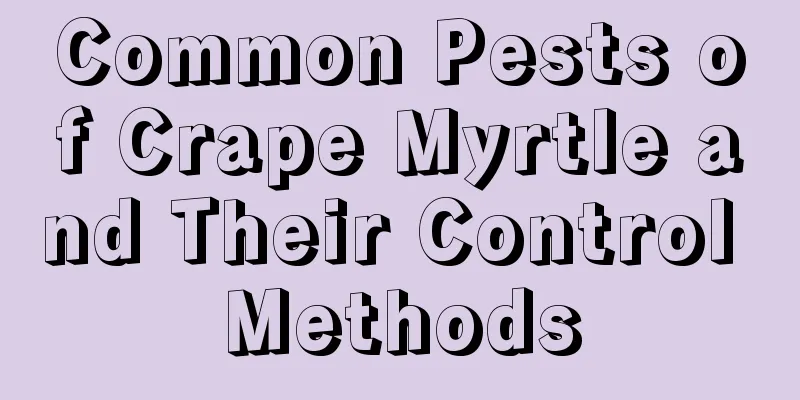Common Pests of Crape Myrtle and Their Control Methods

Aphids infestation on crape myrtleSymptomsThere will be 5-8 generations in the north every year, overwintering as eggs. The initial onset of the disease is in May, and the peak period is in June. Aphids suck sap and damage tender leaves, posing a threat to the growth of crape myrtle. Prevention and treatment methodsIn early spring, scrape off the old bark of the crape myrtle tree, cut off the damaged branches, and burn them in a concentrated manner to eliminate as many overwintering insect eggs as possible. During routine maintenance, cultivation management should be strengthened to reduce the sources of disease. When the aphid infestation is serious, you can choose to spray 1000-2000 times diluted fish vine essence or 1000-1500 times diluted 40% omethoate or 40% acephate to eliminate it, but at the same time, you must also pay attention to avoid drug damage. In places where conditions permit, artificial breeding and releasing natural enemies can be adopted. Free-range raising of multicolored ladybirds or grass beetle larvae are good choices. In addition, you can use color plates to lure and kill winged aphids, or use reflective white tinfoil to keep away migrating aphids. The pests of crape myrtleSymptomsThere are two generations each year, which overwinter as eggs or nymphs. Female adults and nymphs often suck sap from the axils of crape myrtle buds, leaves and branches, causing the branches and leaves to turn black and fall off, which is not conducive to the growth of crape myrtle flowers. In addition, the excrement of this pest can also induce sooty mold disease, which poses a high potential risk. Prevention and treatment methodsIn winter and early spring, prune branches, burn insect-infested branches in a concentrated manner, eliminate insect eggs as much as possible, and manually scrape off any pests found. Strengthen management and quarantine, and apply fertilizers reasonably to enhance the plants' resistance to insects. At the same time, avoid excessive plant density, maintain plant ventilation, and ensure light transmission. You can use the polymer film mixed with the spray and then spray it evenly, which will form a thin film on the surface of the plant, causing the insects to have difficulty breathing and then suffocate to death; or you can use its natural enemy, the red-spotted lip mark insect, to prey and eliminate it. Chemical control can also be adopted when necessary. |
<<: Rose Pests and Their Control
>>: Common pests of Aglaonema and their control
Recommend
Can the tiger lily be repotted in summer? What should be paid attention to when repotting in summer?
Can the tiger lily be repotted in summer? Sansevi...
Cultivation methods and maintenance of old Monstera piles
How to grow Monstera into an old pile If you want...
How many days does it take for ginger to sprout?
Ginger prefers a warm and humid environment, and ...
The correct way to eat papaya, how to eat papaya
1. Eat it raw Pick out a healthy and ripe papaya,...
How to identify Camptotheca acuminata
1.Tree trunk Camptotheca acuminata is a tall deci...
Why do the roots of sunflowers rot? (How to grow them so they don't rot or burst the pot)
Why do the roots of my own sunflowers rot? 1. Ove...
Can durian seeds be planted?
Can durian seeds be planted? Durian seeds can be ...
What flowers are suitable for growing in Changzhi? What are the city flowers and trees?
1. Climate characteristics of Changzhi Changzhi i...
Onion seedling planting method and time planting method and steps introduction (full)
Suitable time for planting onion seedlings Onion ...
Environmental conditions and characteristics of Masson pine growth
Environmental conditions and requirements for the...
Cure diseases, beautify your skin, and eat it in cooking. You won’t have too many of these flowers on your balcony.
Aloe Vera Care Although aloe vera has very strong...
The difference between Winter Beauty and Longyue, which one is easier to raise?
1. The difference between the two 1. Difference i...
How often should I water the anthurium?
1. Watering frequency Generally, water it once ev...
How to raise blue snow flower
1. Lighting The blue snow flower needs relatively...
When going out during the National Day holiday, avoid touching these 8 poisonous weeds. If you see them, take a detour immediately!
Nandina domestica, the whole plant is poisonous, ...









